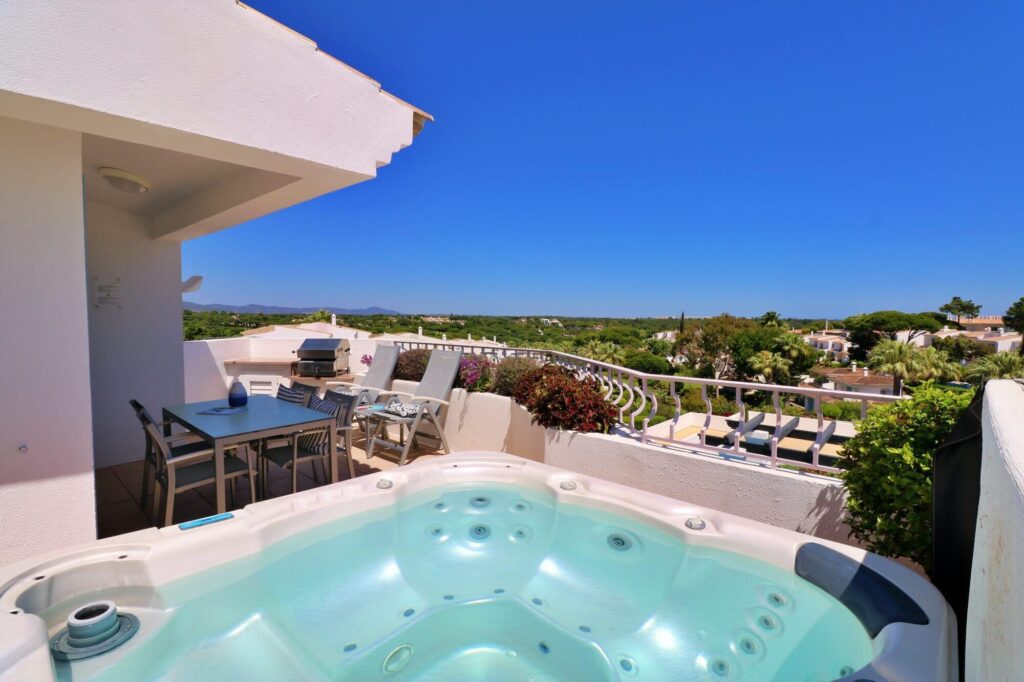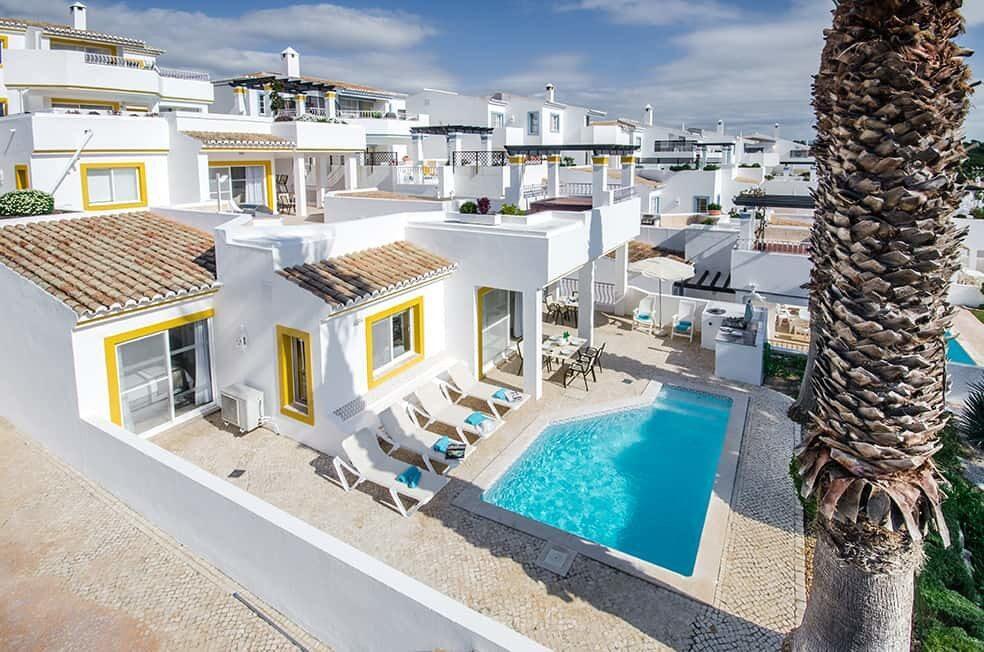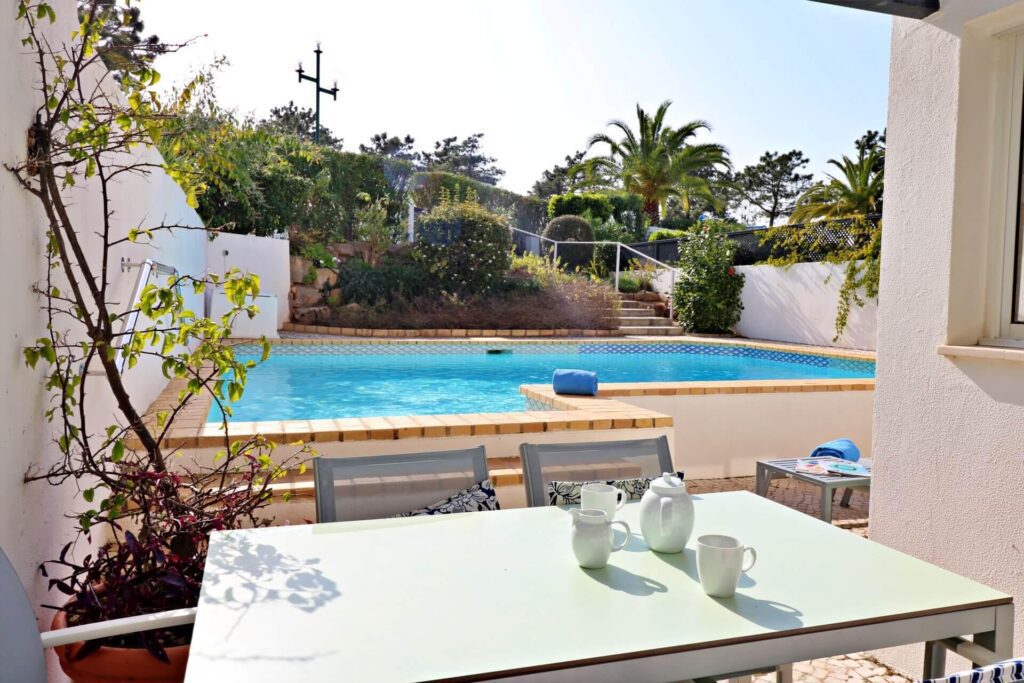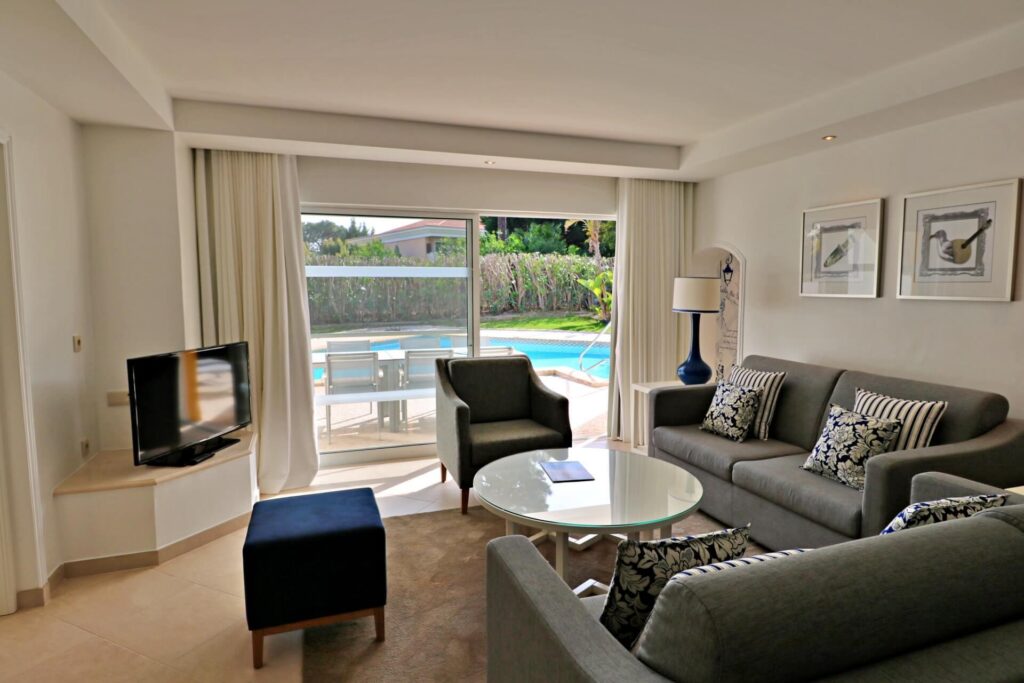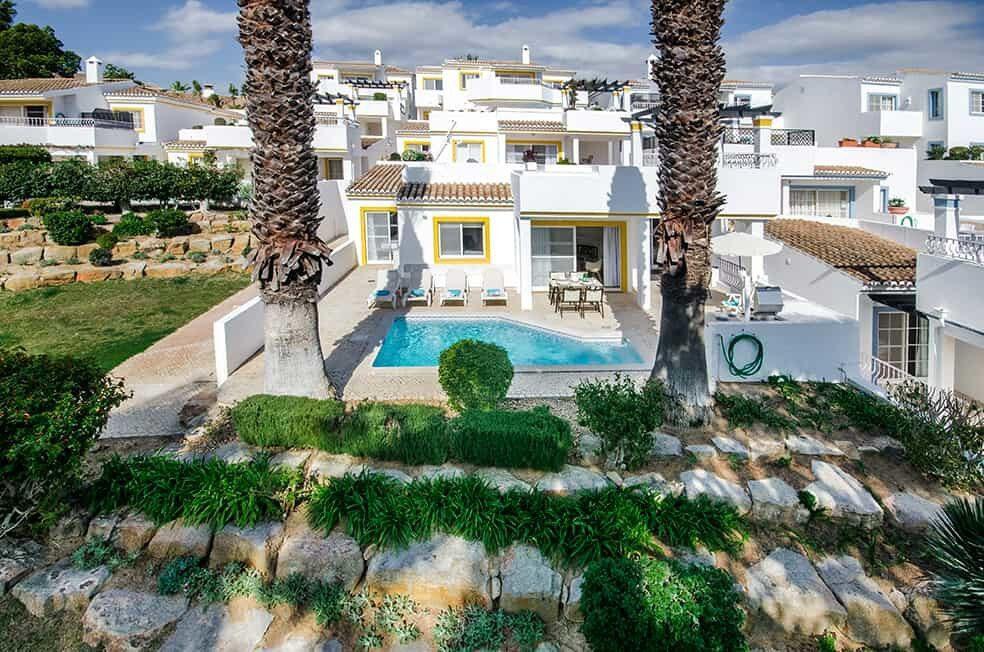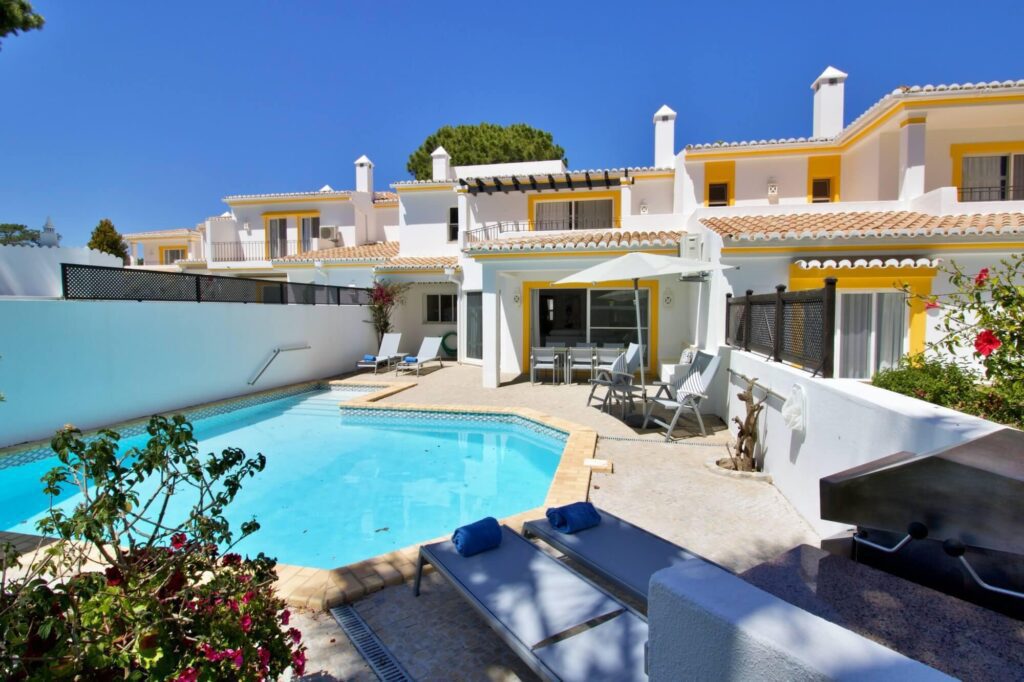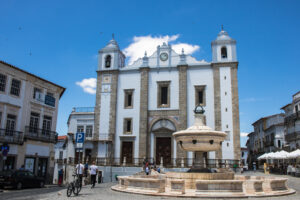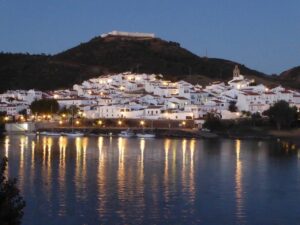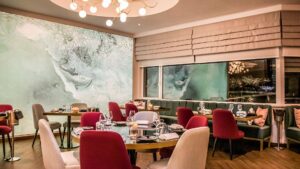The Alentejo region is vast. Stretching from the Algarve in the south to the Tejo river in the north, the east borders Spain and the west is bathed by the Atlantic Ocean.
On our third visit to this stunning region, we decided it was time to travel further and visit the region’s famous capital, Évora, one of Portugal’s most beautifully preserved medieval towns, a two and a half hour pleasant road trip from Fairways.
Dating from the Roman era and now a UNESCO World Heritage Site, we planned a two-night stay to give us plenty of leisure time to explore the home chosen by Portuguese kings in the 15th century. Spared devastation in the 1755 earthquake that levelled Lisbon, contained within Évora’s ancient walls you find Roman ruins, medieval palaces, Gothic religious buildings, cobbled streets and pretty plazas.
We started our visit, after strolling those cobbled streets, with a welcome morning coffee and pastry in the attractive main square and popular gathering space of Praça do Giraldo. Fronted by a Renaissance chapel and encircled by arched buildings, with the morning sun warming us, this was a perfect place to start our exploration. The city is vibrant with a large student population, who attend one of the world’s oldest universities, mingling with locals and visitors alike.
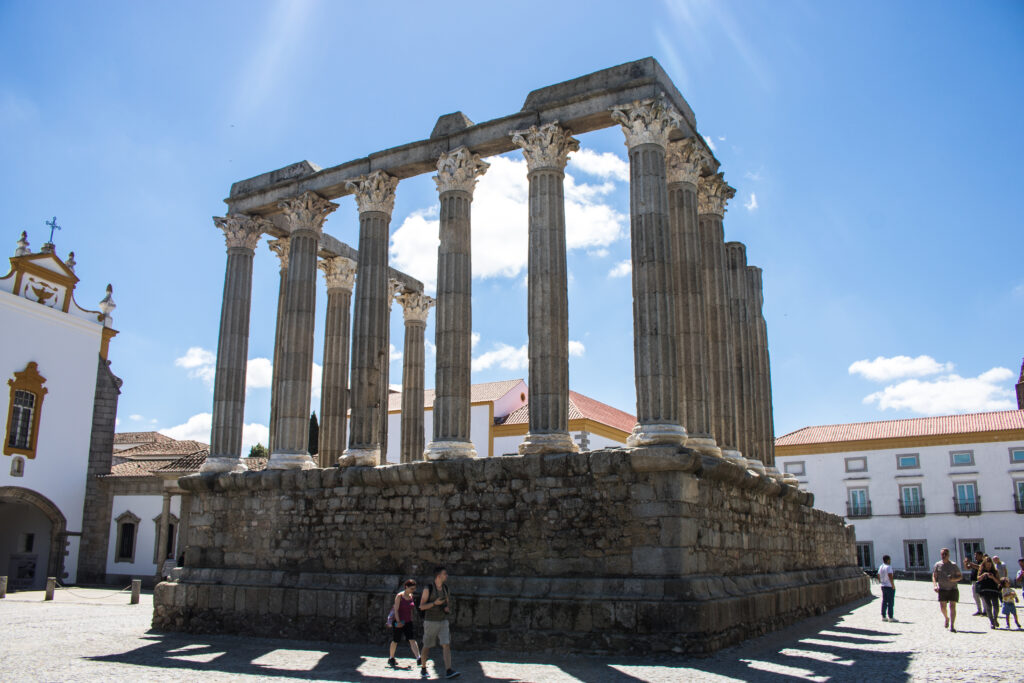
Our next stop was the 13th-century cathedral, regarded as the finest Gothic building in Portugal and largest medieval cathedral.
Having visited the Gothic cloisters, we climbed to the terrace to be rewarded with stunning panoramic
views over the entire city and beyond.
The famous Roman Temple of Évora, also known as the Temple of Diana, the deity of hunting, stands right in the centre of Évora and is the city’s most famous landmark. Thought to be constructed in the first century, as we stood beneath the 14 imposing pillars we were amazed at how it had survived so beautifully over so many centuries. Just aweinspiring.
The next stop was possibly one of the strangest tourist destinations in Portugal, the Capela dos Ossos (Chapel of Bones). By the 16th century, the 43 cemeteries in and around the city were taking up valuable land, so the monks decided to relocate the bones. Designed to provide a place of meditation on life and death, the 5,000 corpses, carefully arranged, cover and decorate the walls, ceiling and columns of the chapel. Although unusual, this is a unique place definitely worth visiting.
A late lunch beckoned us to possibly the most famous restaurant in Évora. Founded in 1945, family run Fialho is something of an institution and not to be missed for local Alentejan specialities.
With the heat of the day at its most fierce, we returned to our hotel, the Convento do Espinheiros.
Just a five-minute drive outside the city, set in beautiful gardens of olive, fig and pink pepper trees, the hotel’s history includes its 15th-century chapel, visited numerous times by Portuguese royalty. A perfect place to relax and recharge.
With so much to enjoy our visit to the north of the Alentejo gave us fascinating insights into the rich history of Portugal and beauty of the region.
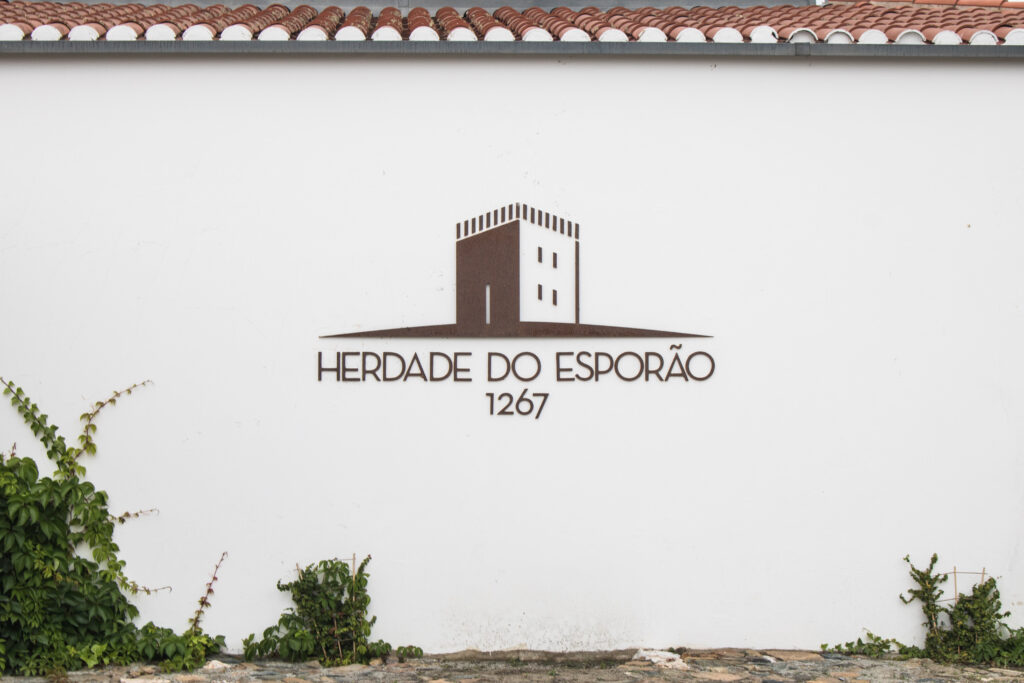
Our love of good food and wine demanded that we make a detour on our journey north.
The home of one of our favourite wines, Esporão, was a welcome 30 minute diversion and provided us with a perfect stopping off point for lunch.
With a Michelin star restaurant, we dined on top-quality locally grown ingredients overlooking their vineyards, olive groves and reservoir.
